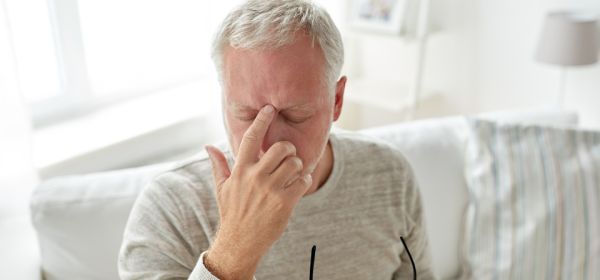Not all headaches are created equal. A headache in the front of your head and one in your temples may be caused by two very different things. According to WebMD, there are over 150 types of headache. Learning which headache is causing you pain is essential to being able to treat it correctly, so that you can get on with what you’re doing.
You can generally determine what kind of headache you have based on where the pain is and what symptoms you experience. Here are five common types of headaches and how to relieve them.
1. Tension headaches
Location: a constant ache or pressure around your head, especially at the temples or back of the head and neck.
While painful and disruptive, tension headaches rarely prevent you from performing daily activities. It is generally believed that these headaches are caused by a contraction of neck and scalp muscles, in response to stress.
Treatment: over-the-counter medicines such as aspirin, ibuprofen and acetaminophen (Tylenol) are usually effective enough treatments.
2. Cluster headaches
Location: often presents as a sudden and severe pain on one side of the head.
Cluster headaches affect men more than women and recur in groups or cycles. Symptoms often include watery eyes, nasal congestion and a runny nose on one side of the face.
Treatment: as the cause of these headaches is unknown, treatment in the form of general pain medications, such as aspirin and ibuprofen is usually recommended.
3. Arthritis headaches
Location: often categorised by pain at the back of the head or neck and may be more prevalent on one side. Pain also tends to intensify with movement.
Caused by arthritis in the spine or neck, these headaches are linked to the second or third vertebrae, when the blood vessels of the head become inflamed and bone changes occur to the neck structure.
Treatment: typical treatment includes muscle relaxants and anti-inflammatory drugs, such as ibuprofen.
4. Migraine headaches
Location: highly severe, throbbing pain usually presenting on one side of the head. Migraine sufferers may find an attack can last anywhere from four hours to three days.
Recognised as a medical condition associated with a spasm of blood vessels leading to brain, migraine headaches most affect young women. The triggers for migraines are unknown, but diet, sleep, menstrual cycle and exposure to emotional, environmental and physical stress are all possible factors.
Treatment: There is no cure for migraines, however, avoiding trigger factors, using anti-inflammatory medication (as both pain relief and preventative treatment) and trying natural remedies can all help.
5. Sinus headaches
Location: gnawing pain over the nasal area which often increases in severity during the day.
Sinus headaches occur when the sinus becomes inflamed due to infection. Symptoms can often include a fever and a blockage of the sinus ducts, which prevents proper drainage. Sinus headaches can be diagnosed by the presence of pus viewed through a fibre-optic scope.
Treatment: Antibiotics, antihistamines and decongestants are usually prescribed to treat sinus headaches. Surgical drainage may sometimes be required.
Related articles:
Understanding headaches
Which bug has bitten you?

